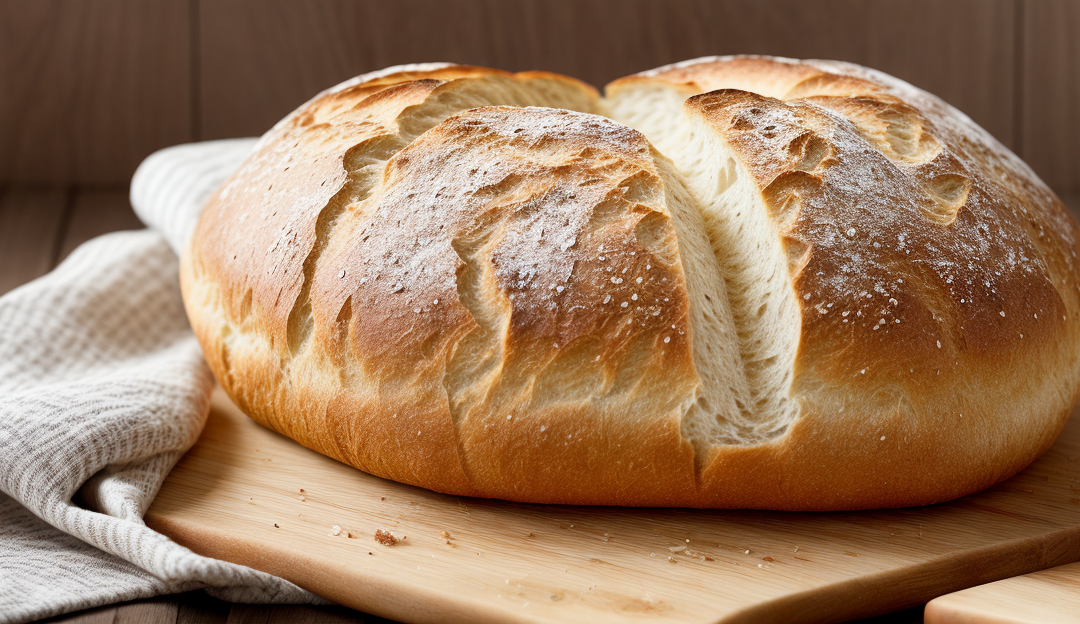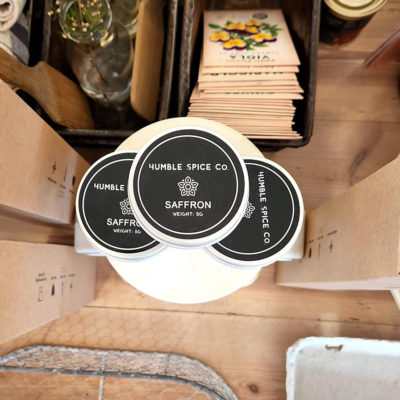Are you ready to experience the art of baking artisan bread in the comfort of your own home?
Get ready to immerse yourself in the zen of sourdough. In this article, we’ll guide you through the basics of sourdough bread, provide you with essential equipment tips, and teach you the art and science of creating the perfect sourdough starter.
Get ready to elevate your bread game and discover the joy of baking with saffron.
Let’s get started!
The Basics of Sourdough Bread
To begin understanding the basics of sourdough bread, you’ll need to gather a few simple ingredients and equipment.
First, you’ll need flour, preferably a high-quality bread flour, as this will give your bread a better structure.
You’ll also need water, preferably filtered or bottled water, to ensure that the chlorine in tap water doesn’t interfere with the fermentation process.
Next, you’ll need salt, which adds flavor and helps regulate the fermentation.
And of course, you’ll need a sourdough starter, which is a combination of flour and water that has been fermented by wild yeast and bacteria.
As for equipment, you’ll need a large mixing bowl, a kitchen scale for accurate measurements, a dough scraper for shaping the dough, and a Dutch oven or baking stone for baking the bread.
With these simple ingredients and equipment, you’re ready to dive into the world of sourdough bread baking.
Essential Equipment for Sourdough Baking
Now that you have gathered the basic ingredients for sourdough bread, let’s explore the essential equipment you’ll need to bake artisan loaves at home.
First and foremost, you’ll need a kitchen scale to accurately measure your ingredients. Sourdough bread relies on precise measurements, so a scale is crucial for consistency.
Next, you’ll need a large mixing bowl and a sturdy wooden spoon or dough whisk to mix your dough. These tools allow you to easily incorporate the ingredients and develop gluten.
A Dutch oven or a baking stone is essential for achieving that perfect crust. These tools provide even heat distribution and retain moisture, resulting in a crispy exterior.
A bread lame or a sharp knife will come in handy for scoring the dough before baking. This allows the bread to expand and creates beautiful patterns.
Lastly, a proofing basket or banneton is recommended for shaping and supporting the dough during its final rise.
With these essential tools, you’ll be well-equipped to embark on your sourdough baking journey.
The Art and Science of Sourdough Starter
To create a successful sourdough starter, you’ll need to understand the art and science behind its fermentation process.
The fermentation process is what gives sourdough its unique flavor and texture. It all starts with capturing wild yeast and bacteria from the environment.
The yeast feeds on the flour’s carbohydrates and produces carbon dioxide, which creates the bubbles in the dough. The bacteria, on the other hand, produces lactic acid, which gives sourdough its tangy taste.
The balance between yeast and bacteria is crucial for a healthy and active starter. Temperature also plays a significant role in the fermentation process. Cooler temperatures slow down fermentation, while warmer temperatures speed it up.
Mastering the Sourdough Baking Process
Get ready to elevate your bread baking skills with the art of mastering the sourdough baking process. Once you have successfully created and maintained a sourdough starter, it’s time to put it to use and bake some delicious artisan bread.
The key to mastering the sourdough baking process lies in understanding the steps and techniques involved. First, you need to mix your starter with flour, water, and salt to create the dough. Then, you must allow the dough to ferment and rise, which can take anywhere from a few hours to overnight.
After that, it’s time to shape the dough and let it proof before baking it in a hot oven. As you gain experience, you’ll learn to adjust the fermentation times and temperatures to achieve the perfect loaf.
Follow these steps to make your own Sourdough
Ingredients:
- 1 cup sourdough starter
- 2 cups lukewarm water
- 4 cups bread flour
- 1 1/2 teaspoons salt
Instructions:
- Activate the Sourdough Starter:
- Take your sourdough starter out of the refrigerator and let it sit at room temperature for 1-2 hours until it’s active.
- Mix Starter and Water:
- In a large mixing bowl, combine 1 cup of active sourdough starter and 2 cups of lukewarm water. Mix well.
- Add Flour and Salt:
- Gradually add 4 cups of bread flour and 1 1/2 teaspoons of salt to the mixture. Stir until a shaggy dough forms.
- Knead the Dough:
- Turn the dough out onto a floured surface. Knead it for about 10 minutes until it becomes smooth and elastic.
- First Rise (Fermentation):
- Place the dough in a greased bowl, cover it with a kitchen towel, and let it rise at room temperature for 4-6 hours or until it has doubled in size.
- Shape the Dough:
- Turn the dough out onto a floured surface and shape it into a round loaf. You can add optional seeds or herbs for flavor at this point.
- Second Rise (Proofing):
- Place the shaped dough on a piece of parchment paper and cover it with a kitchen towel. Allow it to rise for another 1-2 hours.
- Preheat the Oven:
- Preheat your oven to 450°F (230°C). Place a Dutch oven or a baking stone in the oven while it preheats.
- Score the Dough:
- Right before baking, score the top of the dough with a sharp knife to allow for proper expansion while baking.
- Bake:
- Carefully transfer the dough (along with the parchment paper) into the preheated Dutch oven or onto the baking stone. Cover with a lid or an inverted oven-safe pot.
- Bake for 30 minutes with the lid on, then remove the lid and bake for an additional 15-20 minutes, or until the bread is golden brown and sounds hollow when tapped on the bottom.
- Cool:
- Remove the sourdough bread from the oven and let it cool on a wire rack for at least 1 hour before slicing and enjoying.
Making sourdough bread can be a rewarding but time-consuming process, so be patient and enjoy the journey of creating this delicious, naturally leavened bread.
Elevating Your Sourdough With Saffron
Add a touch of elegance to your homemade sourdough bread by incorporating saffron into the baking process.
Saffron, known as the ‘golden spice,’ not only adds a vibrant yellow hue to your bread but also imparts a unique flavor that’s both floral and slightly sweet.
To use saffron in your sourdough bread, begin by infusing a small amount of warm water with a few strands of saffron. Allow the saffron to steep for about 10 minutes until the water turns a rich golden color.
Then, simply add this saffron-infused water to your sourdough dough during the mixing process. The saffron will permeate the bread, resulting in a visually stunning and deliciously fragrant loaf that’s sure to impress.
So there you have it, the zen of sourdough baking at home. With the right equipment, a good understanding of sourdough starter, and mastery of the baking process, you can create artisan bread that rivals any bakery.
And for an extra touch of luxury, try elevating your sourdough with saffron.
Get ready to impress your friends and family with delicious, homemade sourdough bread that will have them coming back for more.
Happy baking!






